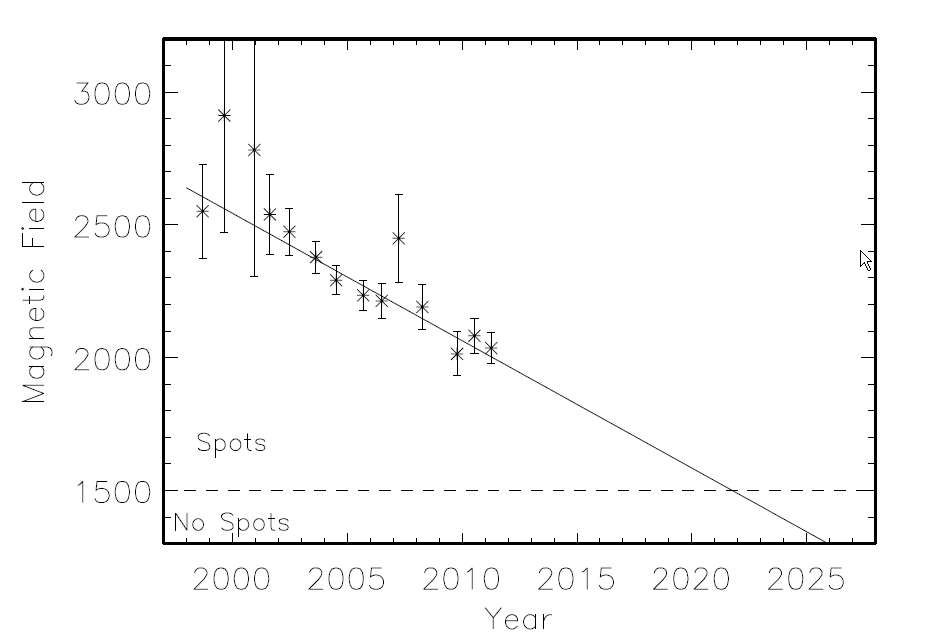Solar activity is failing to revive normally after the deepest solar minimum in a century. This solar cycle, number 24, is not only very late, it is off to a very weak start.
Image may be NSFW.
Clik here to view.
Image may be NSFW.
Clik here to view.
The magnetic field strength of sunspots continues its long term decline. The magnetic field strength is trending to be too weak to produce spots before cycle 25 begins.
Image may be NSFW.
Clik here to view.
Matt Penn and William Livingston see a long-term weakening trend in the strength of sunspots, and predict that by Cycle 25 magnetic fields erupting on the Sun will be so weak that few if any sunspots will be formed. Spots are formed when intense magnetic flux tubes erupt from the interior and keep cooled gas from circulating back to the interior. For typical sunspots this magnetism has a strength of 2,500 to 3,500 gauss (Earth's magnetic field is less than 1 gauss at the surface); the field must reach at least 1,500 gauss to form a dark spot.Using more than 13 years of sunspot data collected at the McMath-Pierce Telescope at Kitt Peak in Arizona, Penn and Livingston observed that the average field strength declined about 50 gauss per year during Cycle 23 and now in Cycle 24. They also observed that spot temperatures have risen exactly as expected for such changes in the magnetic field. If the trend continues, the field strength will drop below the 1,500 gauss threshold and spots will largely disappear as the magnetic field is no longer strong enough to overcome convective forces on the solar surface.
